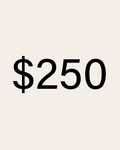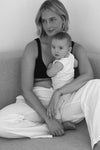My Top Advice for Caring for Sore Nipples During Breastfeeding by Joelleen Winduss Paye - IBCLC Holistic Lactation Consultant.

Breastfeeding is a beautiful and essential part of motherhood, but it can sometimes come with its fair share of challenges, including sore nipples. Proper nipple care is crucial to ensure that you can breastfeed comfortably and without pain. In this article, we will explore my top recommendations for caring for sore nipples, offering advice and guidance to help you on your breastfeeding journey.
Understanding the Importance of Nipple Care
Before delving into the specific products and approaches, it's essential to understand why nipple care matters. The primary cause of nipple pain during breastfeeding is often sub-optimal breastfeeding technique, including a shallow latch. Learning how to recognize and correct these issues is fundamental. However, having the right nipple care products on hand can also significantly aid in the healing process.
-
Expressed Breast Milk (EBM)
- Why: Affordable, accessible, and antibacterial.
- How: Let a few drops of EBM air dry on the nipple.
- When: Ideal for nipples with minimal skin trauma that need to stay healthy and hydrated.
Expressed breast milk is a readily available resource for breastfeeding mothers. It's not only affordable but also contains antibacterial properties that can promote healing. Applying a few drops of EBM and allowing it to air dry on the nipple can provide relief and protection.
-
Silverettes/ Silver nursing cups
- Why: Investment (925 medical grade silver), proactive, and antibacterial.
- How: Place in bra over the nipple after drying EBM.
- When: Suitable for any level of skin trauma, protecting sensitive and sore nipples from friction. Remove occasionally to let nipples air dry.
Silverettes, made of silver, are a proactive investment in nipple care. They offer antibacterial protection and can be worn inside your bra to shield nipples from friction, making them an excellent choice for any level of skin trauma.
-
Saline Solution
- Why: Affordable, speeds healing, and antibacterial.
- How: Rinse the nipples after each feed, preferably with warm saline.
- When: Appropriate any time there is broken or raw skin.
Saline solution is both affordable and has properties that aid in healing. Rinsing your nipples after each feed, especially with warm saline, can promote recovery and maintain cleanliness, reducing the risk of infection.
-
Breast Shells
- Why: Affordable, prevent friction, and keep nipples air-dried.
- How: Apply after nipple care and place inside your bra.
- When: Useful for slow-healing or severely damaged nipples, especially when milk leakage is excessive.
Breast shells are affordable and serve the dual purpose of preventing friction and allowing nipples to air dry. They are particularly helpful for nipples that are slow to heal or severely damaged, while also managing excessive milk leakage.
-
Use Moist Products Sparingly
While products like hydrogel discs and moist topical treatments can provide soothing relief for sore nipples, they should be used intermittently. Moist skin doesn't heal as effectively, so it's important to ensure that your nipples have time to air dry for optimal healing.
-
A Comfortable and Supportive Bra
Invest in a comfortable yet supportive bra that can hold your chosen nipple care product in place. If you experience leakage, consider highly absorbent breast pads or bras designed to manage leaked milk effectively.
Shop comfortable leakproof maternity bras here.
Recognizing Red Flags
It's normal to experience nipple tenderness when learning to breastfeed. However, it's essential to recognize red flags that may indicate more significant issues:
- Pain that persists beyond the first 30 seconds of a breastfeed.
- Increasing pain with each feeding session.
- Nipples that appear persistently pinched-looking after feeding.
- Grazing, cracks, blisters, or bleeding nipples.
- Pain that does not improve within the first week of breastfeeding.
Proper nipple care is crucial for a comfortable and successful breastfeeding experience. Understanding the right products and techniques can optimize healing and minimize discomfort. Remember, while nipple pain can be expected initially, persistent or worsening pain may indicate underlying issues that need attention. Seek support and consult with a lactation consultant or healthcare professional if you encounter difficulties. With the right care and support, you can navigate sore nipples and enjoy the many benefits of breastfeeding.











































